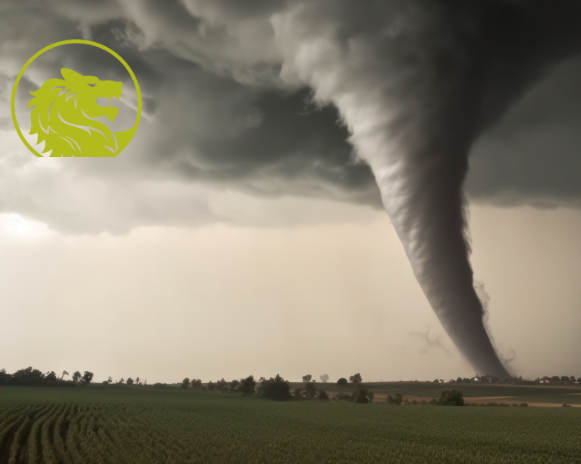
07 Apr Impacted by a Tornado or Severe Storm — What’s Next?
The immediate aftermath of a tornado can be overwhelming and knowing where to turn is difficult. The following guidance outlines some need-to-know information to help your business navigate recovery.
Insurance Tips
1. Prioritize Safety and Documentation
- Check for hazards: Before re-entering the property, confirm it’s safe (no gas leaks, structural damage, etc.).
- Document everything: Take detailed photos/videos of the damage from multiple angles. Make a list of damaged items.
- Save receipts: Any cleanup, repair, or temporary relocation costs should be tracked for insurance or disaster aid.
2. Contact Your Insurance Provider ASAP
- File a claim immediately—most policies require prompt notification.
- Ask for a claims adjuster visit and keep all communication in writing when possible.
- Clarify your coverage: does it include business interruption insurance? (This could cover lost income.)
3. Apply for Federal and State Assistance
- FEMA: If you’re in a federally declared disaster area, apply for aid through disasterassistance.gov.
- SBA Disaster Loans: The Small Business Administration offers low-interest loans to repair or replace:
- Real estate
- Equipment
- Inventory
- Business interruption losses
- Local resources: Your city or state might have grant programs or tax relief.
4. Communicate with Customers and Vendors
- Post updates on social media, Google Business, and your website about:
- Temporary closures
- New location (if applicable)
- How customers can support you (e.g., online orders, gift cards)
- Be honest but positive—people want to support you after a disaster.
5. Cleanup and Rebuild Strategically
- Hire reputable contractors—watch out for “storm chasers” (scammers).
- Consider upgrades: If you’re rebuilding anyway, it might be time to improve insulation, layout, or even tornado resistance.
6. Reassess and Prepare for the Future
- Disaster plan: Update or create a business continuity plan, including cloud-based backups of:
- Customer files
- Financial records
- Insurance policies
- Emergency savings: If possible, build a cash cushion once back on your feet.
- Consider investing in portable business solutions (like mobile POS, cloud services, or a generator).
7. Ask for Help (and Accept It)
- Local chambers of commerce and small business networks often offer free support.
- Crowdfunding platforms (e.g., GoFundMe) can be surprisingly effective when paired with a heartfelt story and local media coverage.
Additional Resources:
Weather Alerts
• National Oceanic and Atmospheric Administration Weather Radio: https://www.weather.gov/nwr
• National Weather Service (Understanding Tornado Alerts): https://www.weather.gov/safety/tornado-ww
Disaster Assistance Recovery Resources
• American Red Cross: 1-800-733-2767 or https://www.redcross.org/find-your-local-chapter.html
• Federal Emergency Management Agency (FEMA): 1-800-621-3362 or https://www.fema.gov/
• Salvation Army: 1-800-725-2769 or https://www.salvationarmyusa.org/usn/
• Disaster Distress Helpline: 1-800-985-5990 or https://www.samhsa.gov/find-help/helplines/disaster-distress-helpline
Knowing where to go for help and what to tackle in the aftermath of a tornado can be challenging. Barrow Group/Hilb Group can guide you through recovery actions, streamline the insurance process, and help you regain some normalcy.
Contact us today to find out more.




Sorry, the comment form is closed at this time.